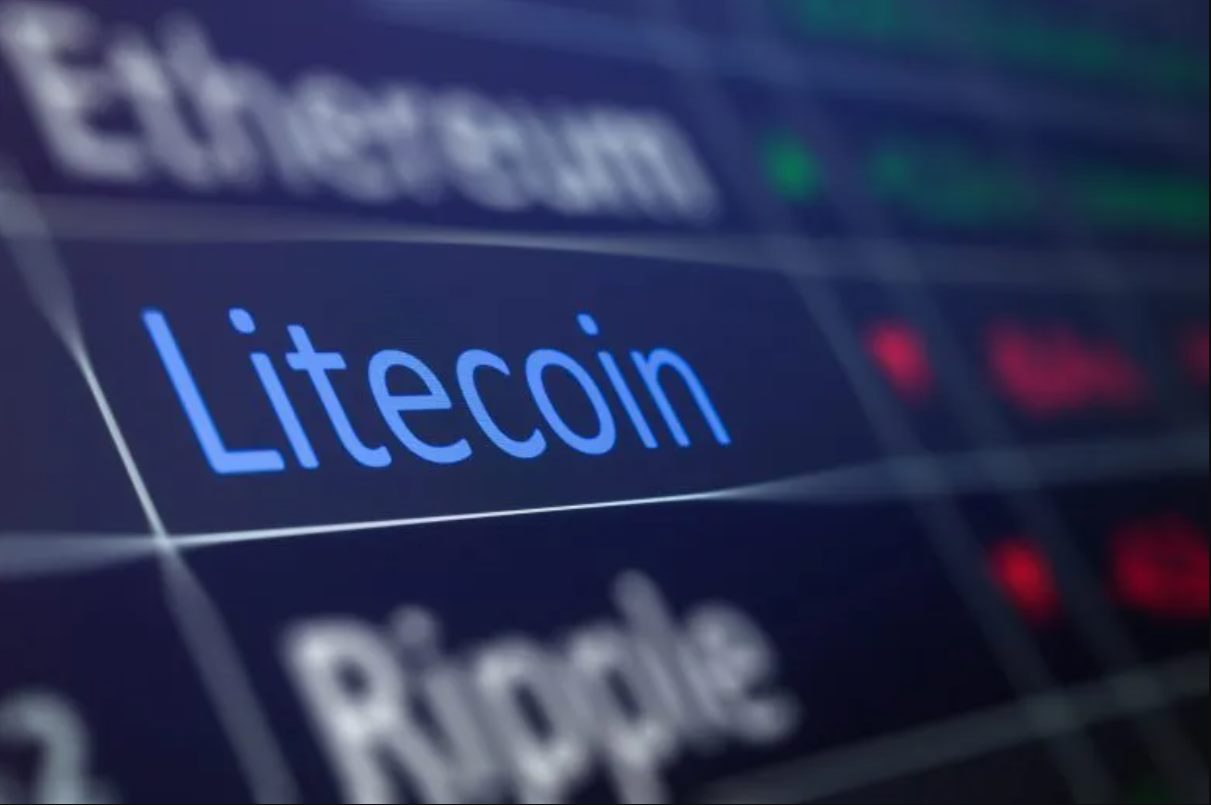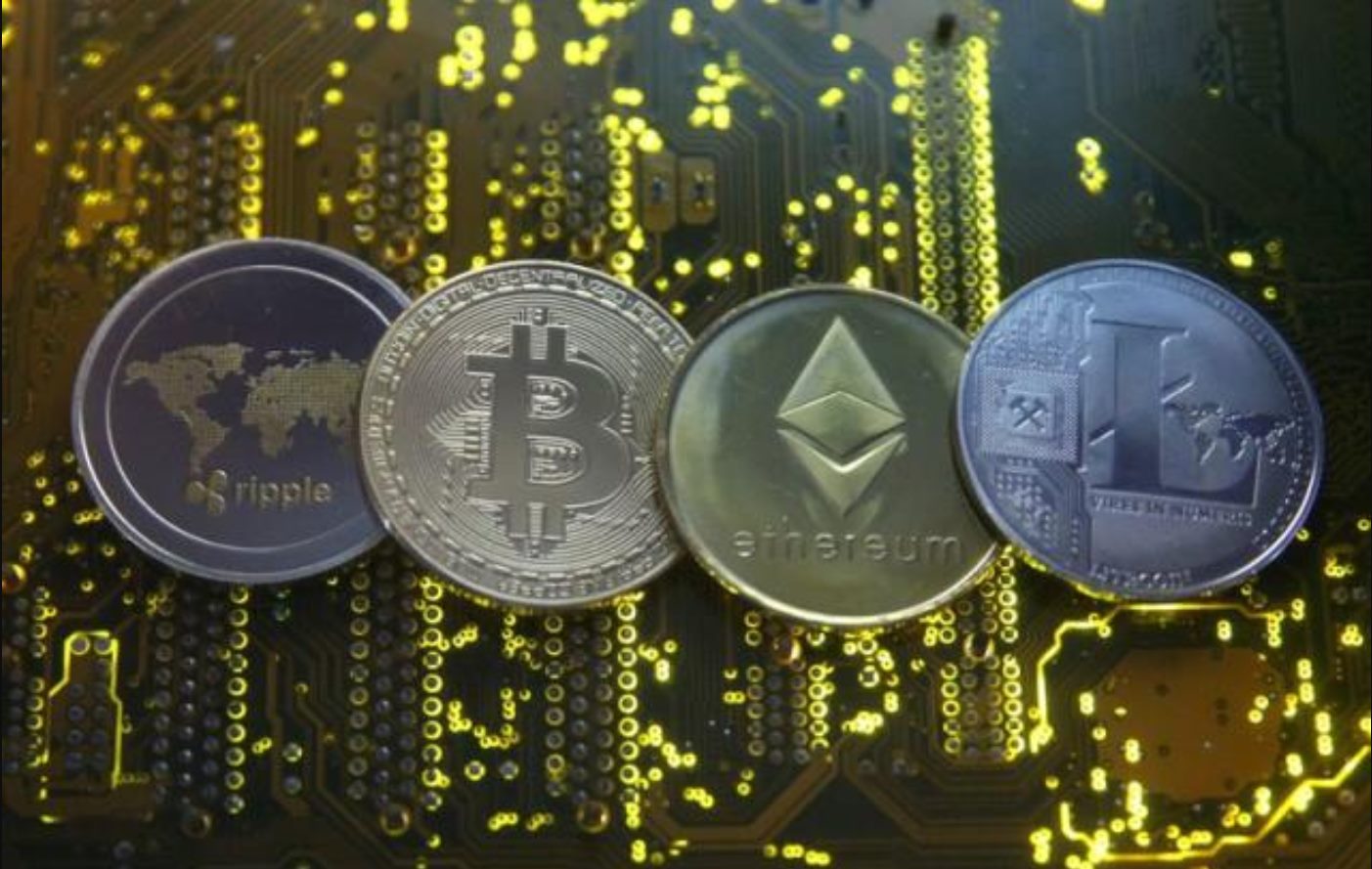Introduction
Welcome to the world of cryptocurrency trading, where digital assets can be exchanged for one another with ease. If you’re a crypto enthusiast looking to diversify your portfolio, you may be interested in learning how to trade Litecoin for Ripple. Both Litecoin and Ripple are prominent cryptocurrencies with unique features and potential for growth.
Litecoin, often referred to as the “digital silver,” was created in 2011 by Charlie Lee, a former Google engineer. It is a decentralized digital currency that utilizes blockchain technology to enable secure and instant transactions. Litecoin offers faster block generation times and employs a different hashing algorithm than Bitcoin, making it more accessible for everyday transactions.
Ripple, on the other hand, is a digital payment protocol that aims to revolutionize cross-border transactions and remittances. Developed by Ripple Labs, the Ripple network enables fast and cost-effective transfers of various assets, including fiat currencies, cryptocurrencies, and even commodities. The native cryptocurrency of the Ripple network is called XRP.
So, why would you want to trade Litecoin for Ripple? There are several reasons to consider. Firstly, Ripple has gained significant adoption from financial institutions, making it a promising investment opportunity. Its partnerships with major banks and its focus on enhancing the efficiency of cross-border payments have made it a popular choice in the financial industry. Secondly, Litecoin offers a certain level of stability and security, which can be valuable when diversifying your cryptocurrency holdings.
In this article, we will guide you through the process of trading Litecoin for Ripple, step by step. By the end, you will have a clear understanding of how to navigate the crypto market and make informed trading decisions. So, let’s get started!
What is Litecoin?
Litecoin is a popular cryptocurrency that was created as a fork of Bitcoin in 2011. It was designed to address some of the limitations of Bitcoin and offer users a faster, more efficient, and lightweight digital currency.
Created by Charlie Lee, a former Google engineer, Litecoin operates on a decentralized network, similar to Bitcoin, using blockchain technology. The main difference between the two is the hashing algorithm used for mining. Litecoin uses a hashing algorithm called “Scrypt,” which allows for faster block generation and a more efficient mining process.
One of the main advantages of Litecoin is its faster block confirmation time. While Bitcoin has a block time of around 10 minutes, Litecoin’s block time is just 2.5 minutes. This means that transactions can be confirmed more quickly, making Litecoin a preferred choice for everyday transactions and small payments.
Litecoin also has a higher maximum supply compared to Bitcoin. While Bitcoin has a limited supply of 21 million coins, Litecoin has a maximum supply of 84 million coins. This larger supply helps to ensure that Litecoin remains more accessible and affordable for users.
Another notable feature of Litecoin is its active and passionate community. Litecoin has attracted a dedicated following of users and developers who contribute to its ongoing development and promotion. This community has led to the implementation of several innovative features and improvements to the Litecoin network.
In recent years, Litecoin has gained wider recognition and acceptance as a legitimate form of digital currency. It is accepted by various online merchants and can be used for purchasing goods and services. Additionally, Litecoin can be traded on numerous cryptocurrency exchanges, making it accessible to individuals looking to invest or trade cryptocurrencies.
Overall, Litecoin offers a secure and efficient means of conducting transactions in the digital world. Its fast transaction confirmations and active community make it an attractive choice for both users and traders alike. Now that you have an understanding of what Litecoin is, let’s explore Ripple and its unique features.
What is Ripple?
Ripple is a digital payment protocol and cryptocurrency that aims to transform the global financial system. Developed by Ripple Labs, the Ripple network facilitates fast and seamless transactions, especially for cross-border payments and remittances.
Unlike traditional money transfer systems, which rely on intermediaries and can take days to process transactions, Ripple offers near-instant settlement. This is achieved through the use of their native cryptocurrency, XRP, which acts as a bridge currency for facilitating transfers between different fiat currencies.
One of the key features of Ripple is its decentralized consensus algorithm known as the XRP Ledger. Unlike other blockchain networks that rely on mining or validators, the XRP Ledger uses a unique consensus algorithm based on a network of trusted validators. These validators reach consensus on the validity and order of transactions, enabling fast and secure settlement.
Ripple’s focus on improving cross-border payments has attracted the attention of numerous financial institutions around the world. It offers a cost-effective and efficient solution for banks and payment providers to facilitate global money transfers. By utilizing Ripple’s technology, these institutions can reduce the time and cost associated with cross-border transactions, benefiting both the providers and the end-users.
Another notable feature of Ripple is its commitment to interoperability with existing financial systems. Ripple enables integration with various payment networks, allowing seamless transfer of funds between different systems. This interoperability has positioned Ripple as a potential disruptor in the financial industry, as it has the potential to provide a seamless and efficient global payment network.
The native cryptocurrency of the Ripple network, XRP, is an essential component of the ecosystem. It serves as a bridge currency, facilitating the transfer of value across different fiat currencies. XRP can also be used as a settlement asset, enabling faster and cheaper transactions within the Ripple network.
With its focus on providing faster, cheaper, and more efficient cross-border transactions, Ripple has gained significant traction in the financial industry. The network has formed partnerships with major banks and payment providers, further solidifying its position as a leading player in the space.
Now that you have an understanding of what Ripple is and how it aims to revolutionize global payments, let’s move on to exploring the reasons for trading Litecoin for Ripple.
Why trade Litecoin for Ripple?
Trading Litecoin for Ripple offers several potential advantages and opportunities for cryptocurrency traders. Let’s explore some of the key reasons why you may consider making this trade:
1. Diversification: By trading Litecoin for Ripple, you can effectively diversify your cryptocurrency portfolio. Litecoin and Ripple are two distinct digital assets with different use cases and potential for growth. Diversifying your holdings across multiple cryptocurrencies can mitigate risk and increase the potential for returns.
2. Adoption and partnerships: Ripple has gained notable adoption from financial institutions, banks, and payment providers worldwide. Its partnerships with major players in the financial industry offer Ripple strong potential for growth and further adoption. By trading Litecoin for Ripple, you can gain exposure to this growing network and potentially benefit from its expanding ecosystem.
3. Cross-border transactions: Ripple’s primary focus is on facilitating fast and cost-effective cross-border payments. If you believe in the potential of Ripple’s network to revolutionize global remittances and international money transfers, trading Litecoin for Ripple can position you to benefit from any success it achieves in this domain.
4. Potential for price appreciation: Cryptocurrency markets are known for their volatility and the potential for significant price movements. While Litecoin has had its fair share of price surges, Ripple’s increasing adoption and partnerships can potentially lead to substantial price appreciation. By trading Litecoin for Ripple, you may position yourself to capitalize on any upward price trends.
5. Unique features: Both Litecoin and Ripple have their unique features and value propositions. Litecoin offers faster transaction confirmations and operates on a different hashing algorithm than Bitcoin, making it suitable for everyday transactions. Ripple, on the other hand, focuses on revolutionizing cross-border payments and offers fast settlement times. By trading Litecoin for Ripple, you can gain exposure to these distinct attributes.
These are just a few reasons why trading Litecoin for Ripple can be an appealing option. However, it’s essential to conduct thorough research and analysis before making any trading decisions. Consider factors such as your investment goals, risk tolerance, and market conditions to determine if trading Litecoin for Ripple aligns with your overall cryptocurrency trading strategy.
With an understanding of the advantages of trading Litecoin for Ripple, let’s move on to the step-by-step process of executing this trade.
Step 1: Set up crypto wallets
Before you can start trading Litecoin for Ripple, you need to have crypto wallets in place to securely store your digital assets. Crypto wallets are software applications or hardware devices that enable you to store, manage, and transfer cryptocurrencies.
1.1 Choose a Litecoin wallet: To store your Litecoin, you need a wallet that is compatible with the Litecoin protocol. There are various types of wallets to choose from, such as desktop wallets, mobile wallets, web wallets, and hardware wallets. Each type has its own advantages and considerations, such as convenience, security, and accessibility. Research different wallet options and choose the one that best suits your needs.
1.2 Choose a Ripple wallet: Similarly, you need a wallet that supports Ripple (XRP) to store your acquired Ripple coins. Ripple wallets can also come in different forms, including desktop wallets, mobile wallets, web wallets, and hardware wallets. Consider the security features and user-friendliness of the wallet before making a decision.
1.3 Set up and secure your wallets: Once you have chosen your Litecoin and Ripple wallets, follow the provided instructions to set them up. This typically involves downloading and installing the wallet application, creating a new wallet, and securely backing up your wallet’s recovery phrase or private keys. Take extra precautions to secure your wallets by enabling two-factor authentication (2FA) and regularly updating your software.
1.4 Verify wallet compatibility: Ensure that your wallets support both Litecoin and Ripple, as you will need to use them for the trading process. Check the wallet’s documentation or reach out to their support team if you have any doubts or questions regarding compatibility.
1.5 Fund your wallets: Once your wallets are set up, you will need to fund them with the respective cryptocurrencies. Transfer your existing Litecoin holdings to your Litecoin wallet and make sure you have enough Ripple (XRP) in your Ripple wallet to initiate the trading process.
1.6 Backup your wallets: It is crucial to regularly back up your wallets to ensure the safety of your funds. Backup your wallet’s recovery phrase or private keys stored in a secure location. This will allow you to recover your wallet in case of loss, theft, or hardware failure.
By completing this first step of setting up crypto wallets, you are now ready to move on to the next step of choosing a trading platform for Litecoin to Ripple transactions.
Step 2: Choose a trading platform
Choosing a reliable and reputable trading platform is essential for executing your Litecoin to Ripple trades smoothly and securely. A trading platform, also known as a cryptocurrency exchange, is a digital marketplace where traders can buy, sell, and trade various cryptocurrencies.
2.1 Research available platforms: Start by researching different trading platforms that support both Litecoin and Ripple. Look for platforms that have a good reputation among users, offer a user-friendly interface, provide robust security measures, and have competitive trading fees. Consider reading user reviews, checking platform comparison websites, and gathering feedback from trusted sources to make an informed decision.
2.2 Check supported trading pairs: Ensure that the trading platform you choose supports the Litecoin to Ripple trading pair. Some platforms may have a limited selection of trading pairs, so it’s crucial to verify that your preferred pair is available.
2.3 Evaluate security features: Security should be a top priority when selecting a trading platform. Look for platforms that implement strong security measures such as two-factor authentication (2FA), cold storage for funds, encryption, and regular security audits. Consider the platform’s track record in terms of handling security incidents and protecting user funds.
2.4 Assess trading features: Different trading platforms offer various features to enhance the trading experience. Consider factors such as order types (market, limit, stop-limit), charting tools, real-time data, customizable dashboards, and mobile trading apps. These features can contribute to your trading strategy and overall convenience.
2.5 Understand deposit and withdrawal methods: Familiarize yourself with the deposit and withdrawal methods supported by the trading platform. Look for platforms that offer convenient and secure options for depositing your Litecoin and withdrawing your Ripple. Also, consider the associated fees and processing times for these transactions.
2.6 Verify regulatory compliance: Make sure that the trading platform you choose operates in compliance with relevant regulations. Platforms that adhere to regulatory standards prioritize the safety of user funds and follow industry best practices.
2.7 Test customer support: Reach out to the customer support of the trading platforms you are considering and ask any questions or concerns you may have. Assess their responsiveness, knowledge, and willingness to assist you. Prompt and reliable customer support can be crucial during critical times or in case of any issues that may arise during your trading process.
By carefully evaluating and selecting a suitable trading platform, you can ensure a seamless and secure trading experience as you move forward with trading Litecoin for Ripple. In the next step, we will cover how to deposit your Litecoin into your chosen trading platform.
Step 3: Deposit Litecoin into your trading account
Once you have chosen a trading platform to facilitate your Litecoin to Ripple trade, the next step is to deposit your Litecoin into your trading account. This will allow you to have the necessary funds available for the trading process.
3.1 Navigate to the deposit section: Log in to your trading account on the chosen platform and navigate to the deposit section. Look for the specific instructions or guidelines provided by the platform to locate the deposit feature.
3.2 Select Litecoin (LTC) deposit: Within the deposit section, you will typically find a list of supported cryptocurrencies. Select Litecoin (LTC) from the list as the cryptocurrency you want to deposit into your trading account.
3.3 Generate a deposit address: The trading platform will generate a unique deposit address for your Litecoin. This address is specific to your trading account and acts as a destination for your Litecoin deposits.
3.4 Copy the deposit address: Copy the generated deposit address carefully. Ensure that you have copied the entire address correctly, as any mistake may result in the loss of your funds.
3.5 Initiate the deposit: Open your Litecoin wallet and look for the option to send or transfer funds. Paste the deposit address you copied from the trading platform into the recipient or destination address field. Enter the amount of Litecoin you wish to deposit and confirm the transaction.
3.6 Wait for confirmation: The deposit process may take some time, depending on network congestion and the confirmation speed of the Litecoin network. Monitor your trading account on the platform for the status of the deposit and wait until it is confirmed. This may involve several confirmations on the blockchain network.
3.7 Verify the deposit: Once the deposit is confirmed, you should see the deposited Litecoin balance reflected in your trading account on the platform. The funds are now ready to be used for trading purposes.
3.8 Double-check the deposit: It is essential to double-check the deposit made to ensure accuracy. Verify that the deposited amount matches what you intended to deposit and cross-reference it with your transaction history in your Litecoin wallet.
By following these steps, you have successfully deposited your Litecoin into your trading account. Now, you are ready to proceed with the next steps involved in trading Litecoin for Ripple on your chosen platform.
Step 4: Find the Litecoin to Ripple trading pair
With your Litecoin deposited into your trading account, the next step is to locate the Litecoin to Ripple trading pair on your chosen trading platform. The trading pair allows you to exchange your Litecoin for Ripple at the current market price.
4.1 Navigate to the trading section: Log in to your trading account and navigate to the trading section or trading interface of the platform. This is where you can view and access the various trading pairs available.
4.2 Search for the Litecoin to Ripple trading pair: Within the trading section, there is usually a search bar or a list of trading pairs. Search for the Litecoin to Ripple trading pair by entering “LTC/XRP” or similar keywords in the search bar. Alternatively, you can manually locate the trading pair in the provided list.
4.3 Check the order book: Once you have found the Litecoin to Ripple trading pair, take a look at the order book. The order book displays the current buy and sell orders for the trading pair, along with their respective prices and volumes. This information can give you insights into the current market sentiment and liquidity.
4.4 Analyze the price chart: Utilize the price chart for the Litecoin to Ripple trading pair, if available. The chart provides historical price data and helps you analyze price trends, patterns, and other technical indicators. This can assist you in making informed trading decisions based on price movements.
4.5 Monitor the market depth: The market depth, also known as the depth chart, shows the cumulative volume of buy and sell orders at various price levels. Understanding the market depth can provide insights into potential support and resistance levels, helping you determine entry and exit points for your trade.
4.6 Consider the bid-ask spread: Pay attention to the bid-ask spread, which is the difference between the highest price a buyer is willing to pay (bid) and the lowest price a seller is willing to accept (ask). A narrower spread indicates better liquidity and can make it easier to execute trades at favorable prices.
4.7 Evaluate the trading fees: Take note of the trading fees associated with the Litecoin to Ripple trading pair on the platform. Different platforms have varying fee structures, including maker and taker fees. Consider these fees when calculating the costs of your trades.
4.8 Place a limit or market order: Once you have analyzed the trading pair and determined your preferred entry price, you can proceed to place a trade order. Choose between a limit order (specifying the price at which you want to execute the trade) or a market order (executing the trade at the current market price).
By following these steps, you will be able to locate the Litecoin to Ripple trading pair on your chosen trading platform and prepare to execute your trade. In the next section, we will cover the process of placing a trade order and executing the trade.
Step 5: Place a trade order
With the Litecoin to Ripple trading pair identified, the next step is to place a trade order to exchange your Litecoin for Ripple. This involves specifying the details of your trade and executing the order on the trading platform.
5.1 Select the type of trade order: Choose the type of trade order that suits your trading strategy. The two common types are limit orders and market orders. A limit order allows you to specify the price at which you want to buy or sell Ripple. A market order, on the other hand, executes the trade at the current market price.
5.2 Specify the amount: Determine the amount of Litecoin you want to exchange for Ripple. Enter the quantity or specify the percentage of your Litecoin holdings to be used for the trade order.
5.3 Set the price: If you are placing a limit order, set the price at which you want to execute the trade. Make sure the specified price aligns with your trading strategy and reflects the current market conditions.
5.4 Review the total cost: Take note of the total cost of the trade order, including any applicable trading fees. This will give you an understanding of the amount of Ripple you will receive after fees are deducted.
5.5 Double-check the order details: Review all the order details, including the trading pair, the type of order, the amount of Litecoin to be exchanged, and the price. Make sure all the information is accurate and in line with your trading intentions.
5.6 Execute the trade: Once you are satisfied with the order details, execute the trade by submitting the trade order on the trading platform. Follow the prompts provided by the platform to finalize the trade.
5.7 Monitor the trade execution: After placing the trade order, monitor the platform to track the status of the trade execution. You will be able to see if the trade order has been filled or if it is pending. Depending on market conditions and liquidity, the trade may be filled immediately or take some time to complete.
5.8 Verify the trade execution: Once the trade order is executed, double-check your trading account to ensure that the Litecoin has been exchanged for Ripple at the specified price. Verify that the correct amount of Ripple has been added to your account.
5.9 Adjust your trade order, if needed: If the trade order is not immediately executed or the market conditions change, you have the option to adjust the order. You can modify the price, quantity, or cancel the order altogether, depending on your trading strategy.
By following these steps, you will be able to place a trade order to exchange your Litecoin for Ripple on your chosen trading platform. In the next section, we will discuss the importance of reviewing and monitoring your trade.
Step 6: Review and monitor your trade
After executing your trade order to exchange Litecoin for Ripple, it is crucial to review and monitor your trade to ensure everything is progressing as planned. This step allows you to stay informed about the status of your trade and make any necessary adjustments along the way.
6.1 Review trade details: Take a moment to review the details of your executed trade. Verify that the correct amount of Litecoin was exchanged for Ripple at the desired price and that the trade execution aligns with your trading intentions.
6.2 Monitor price movements: Keep an eye on the price movements of Ripple after your trade is executed. Cryptocurrency prices can be volatile, and monitoring the market will help you stay informed about any relevant developments that may impact your trade.
6.3 Set price alerts: Consider setting up price alerts or notifications on your trading platform or through other means to receive updates about significant price movements. This can help you make informed decisions on whether to make additional trades or adjust your trading strategy.
6.4 Track market trends: Stay informed about the overall market trends and sentiment surrounding Ripple and Litecoin. This can involve following news, analyzing market reports, and monitoring social media platforms or dedicated cryptocurrency communities for insights and updates.
6.5 Consider trailing stop-loss orders: To manage risk, you may want to consider placing a trailing stop-loss order. This order type allows you to set a predetermined percentage or dollar value at which you would sell your Ripple holdings if the price starts to decline. This way, you can protect your gains or limit potential losses.
6.6 Make adjustments as needed: Depending on market conditions and your own trading strategy, you may decide to make adjustments to your trade. This can involve taking profit by selling a portion of your Ripple holdings, adding to your position, or even closing the trade entirely.
6.7 Stay updated on trading fees: It is important to keep track of any trading fees associated with your trade. Some platforms may charge fees for trades, withdrawals, or other transactions. Being aware of these fees will help you accurately assess the profitability of your trade.
6.8 Remain vigilant and proactive: The cryptocurrency market can be dynamic and unpredictable. Stay vigilant and proactive in managing your trade. Be prepared to adapt your trading strategy if market conditions change or new information becomes available.
By actively reviewing and monitoring your trade after execution, you can make informed decisions and take appropriate actions to maximize your trading outcomes. In the next step, we will cover the final step of withdrawing your Ripple from the trading platform to your wallet.
Step 7: Withdraw your Ripple to your wallet
Once you are satisfied with your trade and ready to secure your Ripple, the final step is to withdraw your Ripple from the trading platform to your personal Ripple wallet. This step ensures that you have full control over your digital assets and can securely store them.
7.1 Locate the withdrawal section: Log in to your trading account and navigate to the withdrawal section. This is where you can initiate the process of transferring your Ripple from the trading platform to your wallet.
7.2 Select Ripple (XRP) as the withdrawal asset: Within the withdrawal section, choose Ripple (XRP) as the asset you want to withdraw from your trading account. Some platforms may also ask for additional details, such as destination tag or memo, which are often required for Ripple withdrawals.
7.3 Enter your wallet address: Provide the wallet address of your personal Ripple wallet as the destination for the withdrawal. Double-check the address to ensure its accuracy, as any mistakes may result in the loss of your funds.
7.4 Specify the withdrawal amount: Enter the amount of Ripple you want to withdraw from your trading account. Ensure that the withdrawal amount matches your intended transfer and take note of any withdrawal fees associated with the transaction.
7.5 Confirm the withdrawal: Review all the withdrawal details and confirm the transaction on the trading platform. Follow any additional verification steps or security measures the platform may have in place to ensure the security of your withdrawal.
7.6 Wait for the withdrawal to process: After confirming the withdrawal, wait for the platform to process and complete the transaction. The time it takes for the withdrawal to be processed can vary depending on network congestion and the platform’s internal processing times.
7.7 Verify the transaction: Once the withdrawal is processed, verify the transaction by checking the transaction ID on the blockchain explorer. The transaction ID will confirm that the Ripple has been successfully transferred from the trading platform to your personal Ripple wallet.
7.8 Check your Ripple wallet: Open your Ripple wallet and confirm that the funds have been deposited into your wallet. Verify that the correct amount has been added and double-check your wallet’s transaction history for the corresponding deposit.
7.9 Secure your personal Ripple wallet: After the withdrawal is completed, ensure that you have taken appropriate security measures to protect your personal Ripple wallet. This includes enabling two-factor authentication, regularly backing up your wallet’s recovery phrase or private keys, and keeping your wallet software up to date.
By following these steps, you will successfully withdraw your Ripple from the trading platform and have full control over your digital assets in your personal Ripple wallet. You can now securely hold, manage, and utilize your Ripple as desired.
Conclusion
Congratulations! You have successfully learned how to trade Litecoin for Ripple. By following the step-by-step process outlined in this guide, you have gained the knowledge and skills to navigate the cryptocurrency market and execute trades between these two prominent digital assets. Trading Litecoin for Ripple offers the opportunity to diversify your portfolio, take advantage of Ripple’s potential for growth, and explore the benefits of cross-border transactions.
Remember to conduct thorough research and analysis before making any trading decisions. Understand the market conditions, stay updated on the latest news and trends, and consider your own investment goals and risk tolerance. Trading cryptocurrencies involves inherent risks, and it’s crucial to make informed and cautious choices.
As you continue your cryptocurrency journey, it is important to regularly review and adjust your trading strategy based on market conditions and your own objectives. Stay informed about developments in the cryptocurrency world, monitor your trades, and adapt as necessary.
Lastly, always prioritize the security of your funds. Use reputable wallets and trading platforms, enable strong security measures such as two-factor authentication, and keep your private keys or recovery phrases safe and accessible only to you.
Now, armed with the knowledge and skills necessary to trade Litecoin for Ripple, you are ready to embark on your cryptocurrency trading journey. Remember to continuously educate yourself, stay up-to-date with market trends, and make well-informed decisions. Happy trading!

























